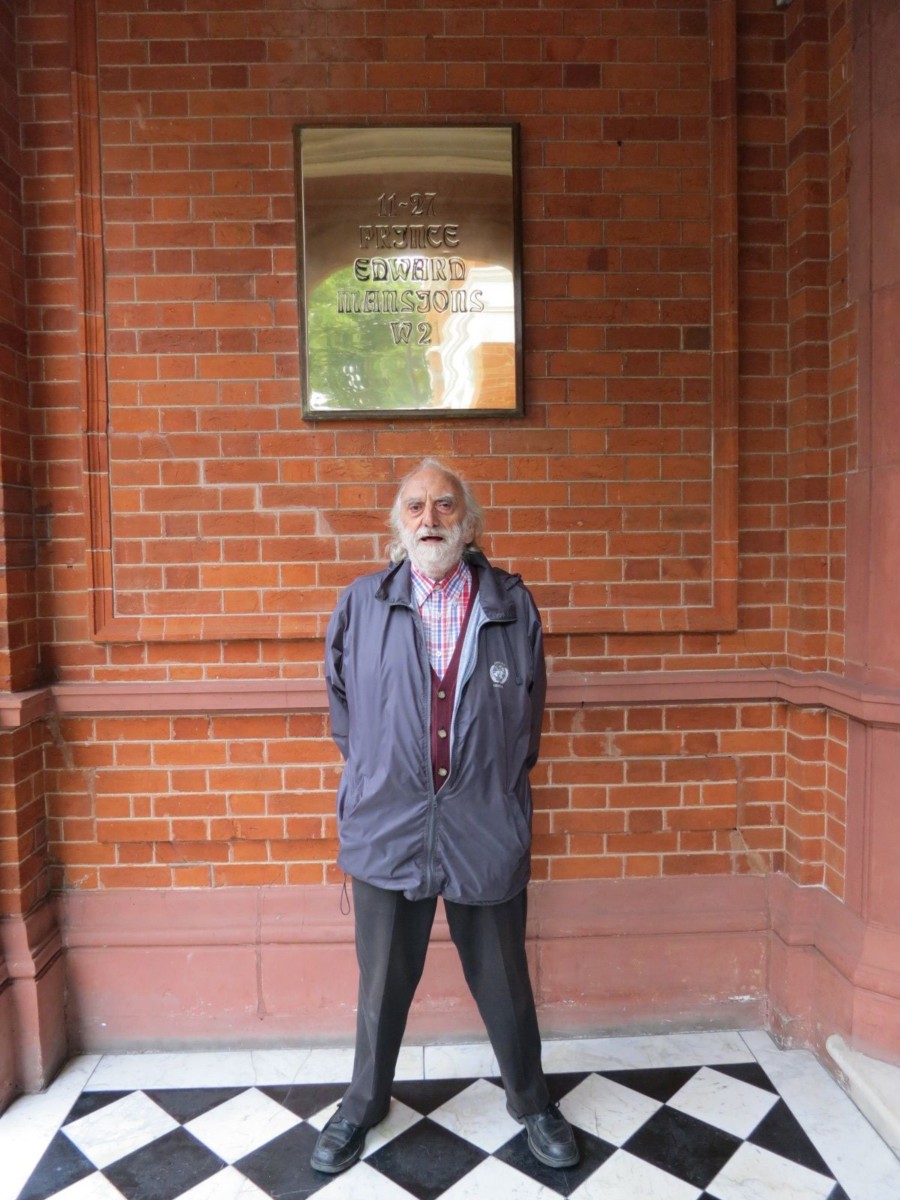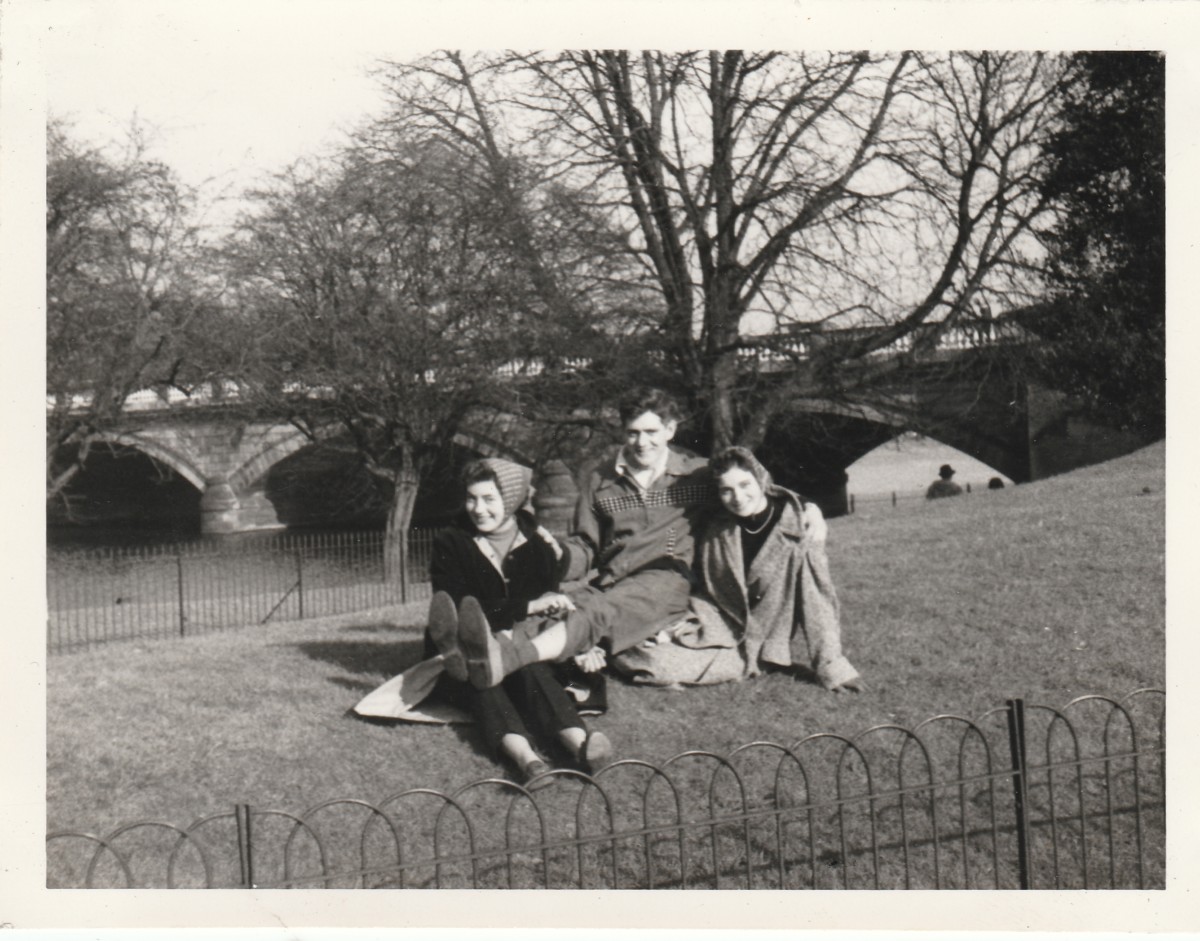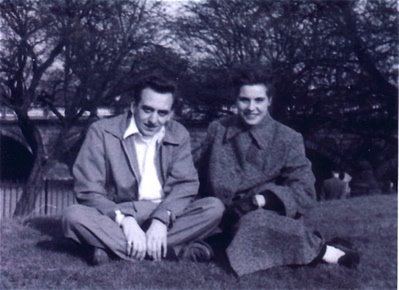Paul Chisholm, originally from New Zealand and a longtime resident of Toronto, now living in Australia, wrote this story about my father, Carl Mollins, who died May 28, 2016, due to injuries caused by a fall during his daily walk on Toronto’s lakeshore.

Carl Mollins outside Prince Edward Mansions, W2, in London’s Bayswater area in 2013. Photo by Tracey Mollins
We first got to know each other in 1955. I had just arrived in London by boat train and was met by Morley Safer who, a day or two earlier, had run into an old high school mate in Trafalgar Square. His name was Carl Mollins and he was broke. Perhaps the three of us could share the cost of renting a flat?
London in the mid-50s was welcoming to us people from the colonies. You could enter the UK with little restriction and stay there for the rest of your days if you so wished. The downside was that the grim, post-war economy was still apparent and incomes were low.
Carefree Carl was in a dilemma. Having spent almost all of his money in Denmark, he casually thought he would work a month or two in London, have a good time and save his fare home. As he was to learn, it would more likely take at least a year.
As neat appearance can be a deciding factor in getting a job, Carl needed new shoes to replace his worn and only pair. The sole of one of the old shoes was detached and was held together with string. Me, fresh from Canada with cash, forked out the 30 shillings for replacements and Carl repaid at the rate of 10 shillings a month.
The new footwear paid off. Carl landed his first job in the book department of Whiteleys department store, a grand old institution close to where we lived in Bayswater. The pay was poor but there was a benefit. Carl would sometimes bring Penguin editions home to finish reading. These he took great care of and were not for my reading. Come morning, the books were dutifully returned to the shelves at Whiteleys where they belonged.
 As winter approached we had second thoughts about our Bayswater flat which was below ground level. Shirts drying in the bathroom stayed damp and a green growth developed around the collars. Safer was returning to Canada and Carl and I sought new accommodation at Prince Edward Mansions on Hereford Road, a stately old multi-storey structure divided up for renters. Our portion was a spacious bedroom/lounge with shared kitchen and bathroom down the hall. With beds at either end and individual lamps we could read without disturbing the other. And for entertainment and extra warmth we invested in a second-hand radio and a kerosene heater.
As winter approached we had second thoughts about our Bayswater flat which was below ground level. Shirts drying in the bathroom stayed damp and a green growth developed around the collars. Safer was returning to Canada and Carl and I sought new accommodation at Prince Edward Mansions on Hereford Road, a stately old multi-storey structure divided up for renters. Our portion was a spacious bedroom/lounge with shared kitchen and bathroom down the hall. With beds at either end and individual lamps we could read without disturbing the other. And for entertainment and extra warmth we invested in a second-hand radio and a kerosene heater.
I think it was Carl’s keen sense of humour and bad jokes that first appealed to me. We experienced many common interests and values and shared the pleasures of theatre and concert halls. One thing I learned from Carl was not to touch my savings for getting back to New Zealand. So we both managed to live and enjoy London on our slim earnings.

Paul Chisholm by the Serpentine in Hyde Park, London, with two friends from Prince Edward Mansions in Bayswater in 1955.
It was during that winter that Joan came on the scene. Not that she displaced me at Prince Edward Mansions: with the coming of spring I was about to take off to explore the British Isles and hitch-hike my way on continental Europe. Carl took over my job as a copy-taker at Westminster Press and eventually became an editorial assistant.
This was the start of his outstanding career in journalism. He was a clear and accurate writer, a perfectionist who provided readers with background, where needed, so that every item stood on its own. He was a kind, benevolent man with a strong sense of justice: the first to donate to a street person or busker. He was a proud Canadian too, but didn’t feel a need to talk it up. He loved children and introduced my young daughter to liquorice allsorts. Alas, they are something she can’t handle as an adult as she tends to scoff the lot in one sitting.
And now it’s Goodbye Carl. To borrow from Aussie parlance: “you were a real good mate!”
Nothing needs adding to that.
–30–
Paul Chisholm
More obituaries:
The Globe and Mail: Carl Mollins, 84, was a journalist’s journalist
The Stop Community Food Centre: Remembering Carl Mollins
Paul Chisholm: Carl Mollins & me
Cy Fox – Carl Mollins: Some notes
Maclean’s magazine: Carl Mollins 1931 – 2016
Canadian Press: Journalist Carl Mollins of the Canadian Press, Maclean’s dead at 84
The Baron: Obituary – Carl Mollins
Rose’s Cantina: Carl Mollins – Renaissance Man
Toronto Star: Death Notice
Globe and Mail: Death Notice




